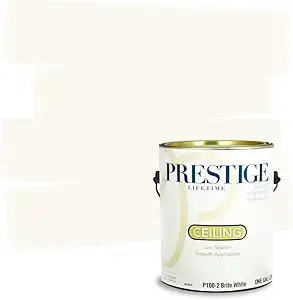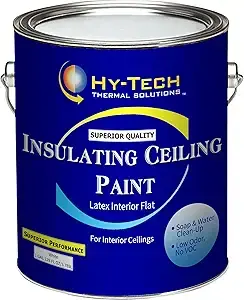If you’re asking what’s the best paint for plywood ceiling, you’re on the right page. This detailed guide will walk you through prep, primer, paint types, finishes—and even point you toward smart product picks.
Why Choosing the Best Paint for Plywood Ceiling Is Crucial
Plywood ceilings are full of character, but their texture, knots, and layers demand more than generic paint. You need a product that:
- Hides imperfections
- Adheres securely
- Suits indoor or exterior conditions
Using anything less may lead to peeling, lap marks, or uneven surfaces.
Step 1: Surface Prep Essentials for Painting Plywood
- Clean, fill, and sand: wipe away dust, fill knots or gaps, then sand with fine paper for a smooth base
- Seal seams: flexible caulk or primer-sealer helps eliminate visible panel joints
- Prime thoroughly: the best primer for painting plywood ensures adhesion and hides grain, making your top coat last longer
Step 2: Scouting the Perfect Paint Type
Interior vs. Exterior
- For indoor ceilings: latex-acrylic or interior enamel is ideal quick-drying, low-odor, and easy to apply
- For outdoor plywood or moisture-prone areas: go for exterior paint for plywood, especially tough enamel formulas
Finish Choices
- Matte/Flat: most forgiving, great at concealing imperfections
- Satin or Semi-Gloss: reflects light for a modern look, but highlights flaws, so prep must be meticulous
Step 3: Insider’s Guide to How to Paint Plywood Finish
- Start with two coats of a high-adhesion primer—especially for raw or porous plywood
- Sand lightly between coats with 220-grit paper for a professional finish
- Apply your top coats: use a quality brush for edges, then a roller for the main area
- If it’s an exterior plywood paint project, choose weather-resistant options and consider clear sealers later for extra protection
Interlinking for Further Reading
- Discover a flawless approach in Best Way to Paint a Ceiling
- Not sure about color? Visit Best Ceiling Paint Color
- For clean edges, check Best Way to Paint Edges Between Wall and Ceiling
Real-World Reviews: Plywood Exterior Paint Reviews & More
Painting isn’t just about technical specs—it’s about real results. For plywood:
- Painting plywood for walls requires similar prep, but small vertical drips matter, choose low-drip paints or add a stabilizing agent
- Best paint for plywood floor tends toward enamel for durability and easy cleanup
Best Amazon Options: Honest Reviews, Not Just Features
Prestige Interior Ceiling Paint, 1‑Gallon, Brite White
Pros: Flat/Matte finish hides dings well, blends smoothly, fewer coats required. Easy application and widely available
Cons: Some users report thin coverage in long-term use and occasional shade inconsistencies
Real takeaway: Great fast-finish choice for indoor ceilings—especially if covering light or previously painted plywood
Hy‑Tech Thermal Solutions Insulating Ceiling Paint – 1 Gallon
Pros: Matte finish, low odor, includes ceramic additive (ThermaCels) for slight insulation benefits. Covers ~150 sq ft per gallon
Cons: Some review threads mention limited actual temperature change and thicker consistency can affect ease of application
Real takeaway: Ideal if you want paint that’s gentle on smell and hides marks—plus bonus insulating angle, though manage expectations on thermal impact
Final Verdict: Best Paint for Plywood Ceiling, and When to Use What
| Scenario | Recommended Product | Why It Works |
|---|---|---|
| Interior, fast application | Prestige Interior Ceiling Paint | Smooth, forgiving matte finish, good coverage |
| Added insulation or low-odor | Hy‑Tech Insulating Ceiling Paint | Matte, low odor, and added thermal value |
| Exterior, high durability | Heavy-duty exterior enamel (pro purchase) | Resists weather, ideal for plywood exposed to elements |
Quick Wrap-Up
- Always start with surface prep—clean, fill, sand
- Use a strong primer before applying paint, especially on plywood
- Choose your paint based on indoor/outdoor use and desired finish: matte for forgiving coverage, gloss for drama (with prep)
- Best paint for plywood ceiling? Prestige for ease and coverage; Hy‑Tech for a quieter, more energy-conscious pick



Leave a Reply